When considering what alpine climbers do most frequently, it’s taking steps. While it may lack glamour, mountain climbing largely involves the basic skill of moving one foot in front of the other. If you persist with this approach, regardless of the terrain or conditions, you’ll eventually reach the peak. However, you’ll also need to repeat this process to descend safely.
Given the extensive time spent standing, choosing the right mountaineering boots is essential for success in the mountains. Want to avoid discomfort throughout the day? Your boots need to fit well. Want to keep your toes and feel them while climbing? Your boots must provide sufficient warmth. Want to navigate snow, ice, rock, dirt, or a combination effectively? Your boots should be built for performance. With these considerations, I aimed to test top mountaineering boots to identify which ones excel to help you climb higher. So, let’s explore with me and my team (nationalparkshops) right now!
| Name | La Sportiva Nepal Cube GTX | Asolo Eiger XT GV Evo | Asolo Fugitive GTX Hiking Boot | La Sportiva Trango Tower Extreme GTX | SCARPA Phantom Tech Waterproof Boots for Climbing & Mountaineering | Salomon Gore-tex Leather Hiking Boot | NORTIV 8 Ankle High Waterproof Hiking Boots |
|---|---|---|---|---|---|---|---|
| Image | 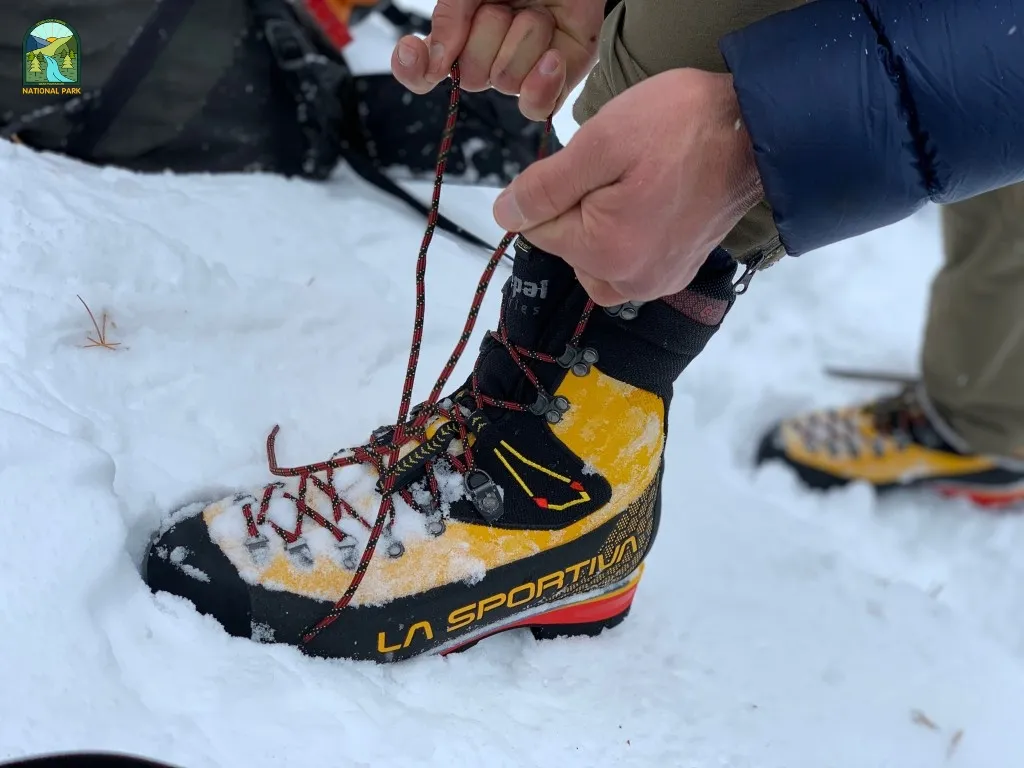 |
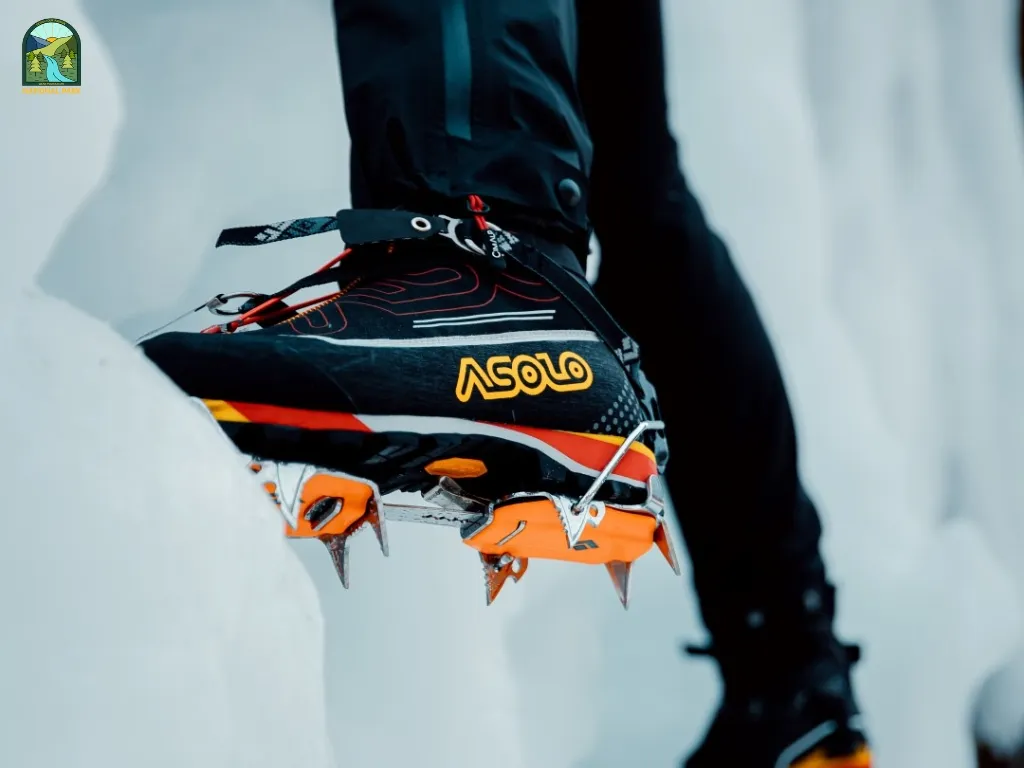 |
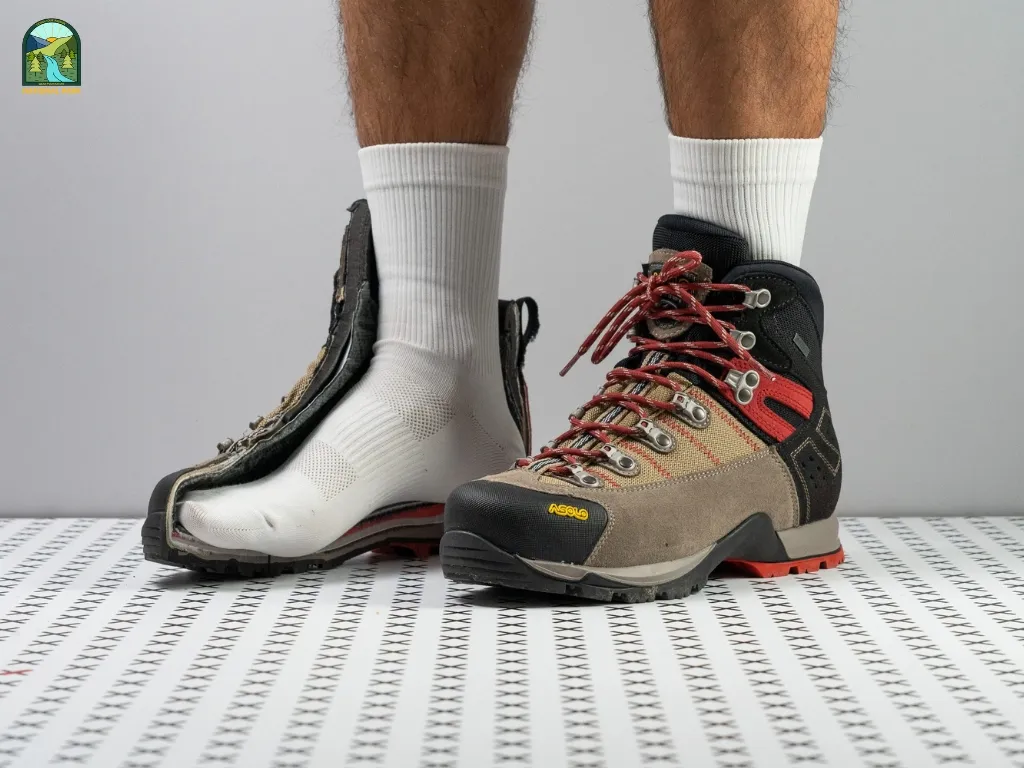 |
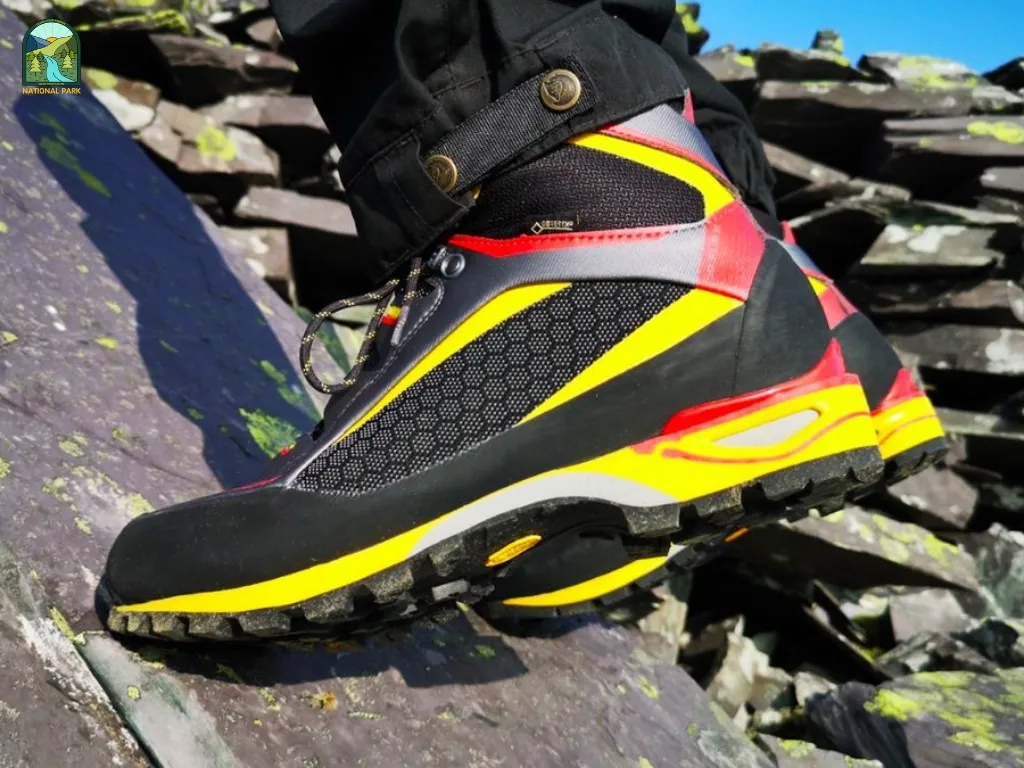 |
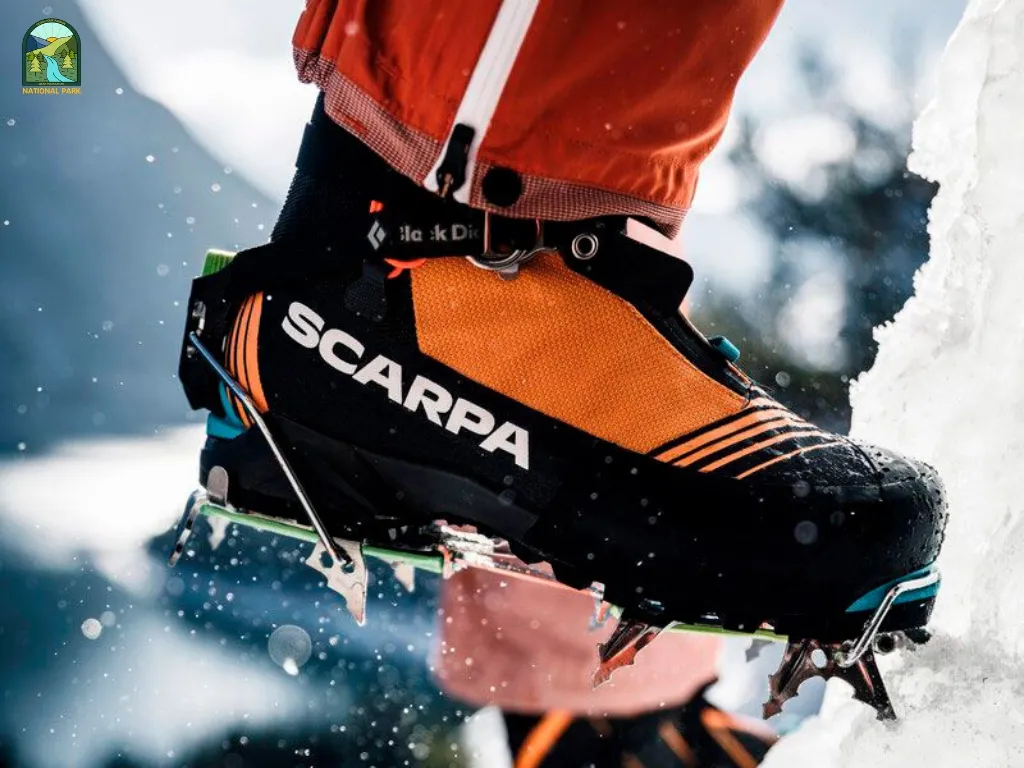 |
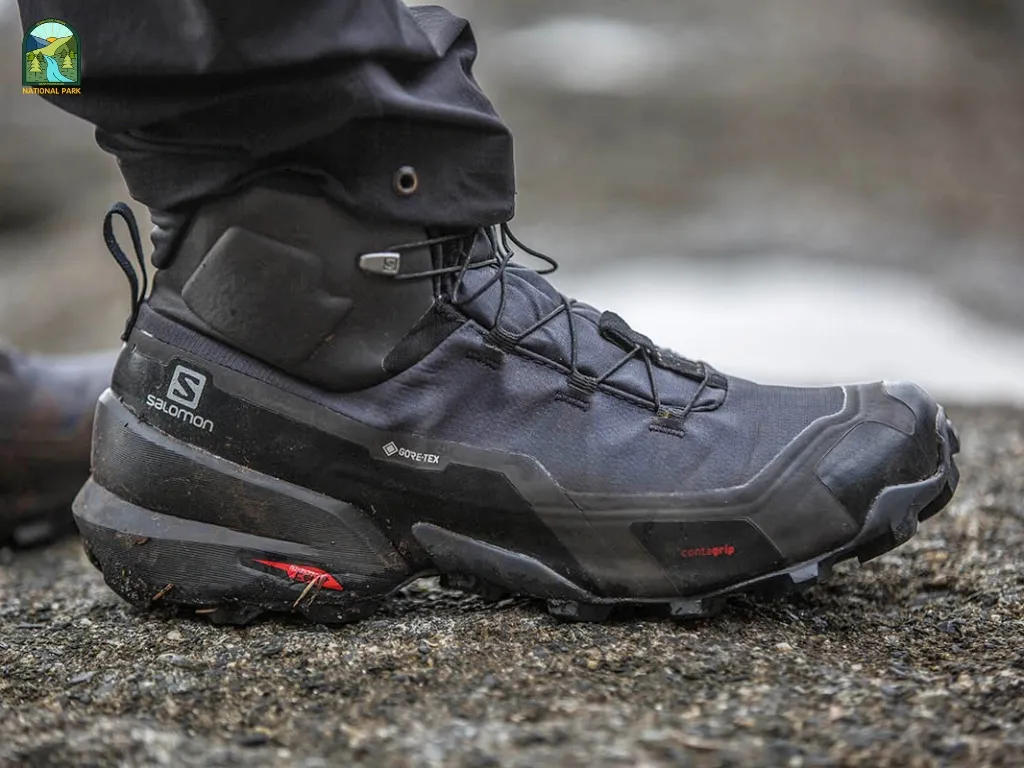 |
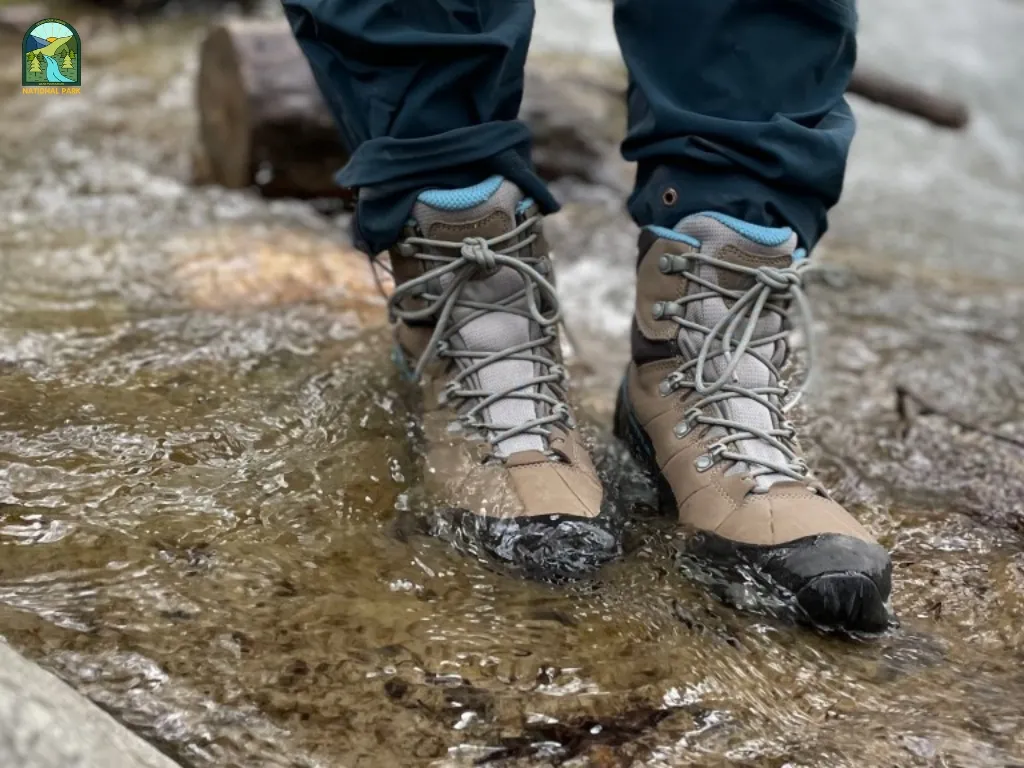 |
| Price | $648.95 on Amazon | $608.98 on Amazon | $233.82 on Amazon | $278.95 on Amazon | $898.95 on Amazon | $189.99 on Amazon | $53.99 on Amazon |
| Buy on Amazon | Buy on Amazon!!! | Buy on Amazon!!! | Buy on Amazon!!! | Buy on Amazon!!! | Buy on Amazon!!! | Buy on Amazon!!! | Buy on Amazon!!! |
| Our choice for: | Best Overrall | Best Quality | Best for Overnight Trips | Best Bang for the Buck | Best for Ice Climbing | Good on Amazon | Top-Rated |
| Rating | ★★★★★ | ★★★★★ | ★★★★★ | ★★★★★ | ★★★★★ | ★★★★★ | ★★★★★ |
| Overal Score |
100%
|
90%
|
92%
|
86%
|
60%
|
86%
|
88%
|
| Color | Yellow | Black/Red | Wool/Black – Black/Red – Light Black/Graphite – Truffle/Stone | Carbon/Hawaiian Sun + 4 Mix Colors | Black/Bright Orange | Black/Deep Lichen Green/Olive Night + 5 Mix Colors | Brown/Black/Tan + 13 Mix Colors |
| Care instructions | Machine Wash | Hand Wash Only | Machine Wash | Machine Wash | Machine Wash/Hand Wash | Machine Wash | Machine Wash |
| Origin | Made in USA or Imported | Made in USA or Imported | Made in USA or Imported | Imported | Imported | Imported | Imported |
| Sole material | Rubber | Rubber | Cordura,Leather,Suede | Leather | Leather | Rubber | EVA,Rubber |
| Shaft height | 9 Inches | 12 inches | 12 inches | Ankle | 6 Inches | ||
| Trail Use | Technical | Ice | Mixed Modern Climbing | Technical | Ice | Mixed Modern Climbing | Traditional Climbing | Technical | Ice | Mixed Modern Climbing | Traditional Climbing | Hiking | Mountaineering | Mixed Modern Climbing | Traditional Climbing | Mountaineering | Mixed Modern Climbing | Traditional Climbing | Hiking | Mixed Modern Climbing | Traditional Climbing | Hiking | Perfect for Outdoors: Designed for both daily work and outdoor activities like hiking, hunting, camping, climbing, cycling, fishing, running, backpacking, trekking, mountaineering, traveling, and so on. |
| Crampon Compatible | Automatic | Automatic | Automatic | Automatic | Automatic | Automatic | Automatic |
| Outer Material | Single leather | Faux Suede | Faux Suede | Leather | Leather | Leather | Faux Leather, Nylon |
| Waterproof | Yes | Water Resistant | Yes | Yes | PU Tek + S-Tech Fabric with HDry | Yes | Yes |
| Sole | Vibram Matterhorn | Vibram SpringLug Tech | |||||
| Weight/Boot (oz) | 31.5 | 12 inches | 18.6 | [Weight] 1lb 12.2oz (½ pair size 42) | 545g/169mm |
How we choose and How we tested
The best mountaineering boots highlighted here were selected based on 1,170 reviews of products. Our top picks are those that are readily available in the United States and have received the highest overall ratings from reviewers.
I evaluated the top mountaineering boots by using them to climb technical peaks and navigate diverse terrains, including glaciers, snowfields, vertical ice formations, talus fields, rocky ridges, and extended approaches on dirt paths. I logged most of my miles in the expansive and rugged Cascade Mountain Range, but I have also tested these boots in various ranges across the U.S.
During the evaluation, I prioritized comfort, fit, warmth, and performance in different alpine environments. I particularly emphasized how well they performed in snowy and icy conditions, especially their capability to prevent falls and assist in crevasse rescues. These aspects were weighted more heavily because if you’re selecting a mountain boot, you are probably intending to traverse snow or ice; otherwise, lighter footwear might suffice.
The testing conditions varied from extremely hot summer temperatures in the PNW to bitterly cold winter days when temperatures dropped below 0 degrees Fahrenheit. After thoroughly testing these boots under challenging conditions and covering numerous miles, I’ve categorized the best mountaineering boots based on the terrain where they excel.
Best Overrall: La Sportiva Nepal Cube GTX ($648.95 on Amazon)
- Category: 4-season technical alpine
- Body design: Single leather
- Weight per pair: 3 lb. 15 oz.
- Crampon: Automatic

La Sportiva’s Nepal line has been the benchmark for advanced single mountaineering boots for more than twenty years. While there have been multiple versions over time, the core idea remains: a robust leather boot that performs well in various mountaineering conditions. These boots keep guides warm on Mount Rainier and are suitable for nearly all but the coldest dry ice days in the Northeast, as well as for trips to lower peaks in the Alaska Range during late April and May. Additionally, the rubber toe allows for some rock climbing when necessary.
The Cube GTX maintains the original Nepal Evo’s technical capabilities and versatility but includes some important updates. Notably, the removable tongue is a great feature that can be adjusted for added padding or space. Furthermore, the Cube weighs 8 ounces less per pair, which is advantageous for long hikes, but this weight reduction leads to decreased durability in the sole and midsole. If your priority is durability or budget, we recommend the Nepal Evo ($599, 4 lb. 7.4 oz.) or Scarpa Mont Blanc Pro GTX ($629, 3 lb. 15.5 oz.) instead. Otherwise, the Nepal Cube GTX offers the necessary warmth and support in a high-quality, reliable design.
Best Quality: Asolo Eiger XT GV Evo ($608.98 on Amazon)
- Sole material: Rubber
- Outer material: Faux Suede
- Closure type: To thread
- Water resistance level: Water Resista

The Asolo Eiger XT Evo GV is an innovative boot that defies conventional categories. It meets the characteristics of a premium gaiter boot: it performs well on ice, rock, and snow, offers decent warmth, and shields our feet from harsh weather conditions. What stands out is its weight, which is almost comparable to a three-season mountaineering boot.
Yet, it has its drawbacks. The lacing system is easy to use, but it doesn’t include a lace lock, preventing differentiation of tension between the forefoot and the heel or ankle. Additionally, the gaiter zipper isn’t waterproof, which slightly affects its ability to keep water out. While it’s not as warm as some competing boots we evaluated, only climbers with cold feet in extreme winter conditions are likely to notice this difference.
Despite these issues, this remains our top choice for a mountain boot, favored by our testers for difficult climbs.
Best for Overnight Trips: Asolo Fugitive GTX Hiking Boot ($233.82 on Amazon)
- Fabric type: Cordura, Leather, Suede
- Origin: Imported
- Sole material: Rubber
- Shaft height: 5.75 Inches

For overnight trips where weight and comfort are essential considerations, the Asolo Fugitive GTX Hiking Boot shines as an excellent option. These boots are designed for those who plan to tackle long hikes with overnight camping in mind.
Weighing significantly less than traditional mountaineering boots while still offering ample support makes them a favorite among backpackers like myself. The Gore-Tex lining ensures that your feet remain dry during unexpected rain showers or river crossings.
The Fugitive GTX features a Vibram sole that provides excellent traction on various surfaces, from rocky trails to muddy paths, making them incredibly versatile for different terrains. The padded collar adds extra comfort around the ankles without restricting movement – an essential feature when navigating rugged landscapes. Additionally, these boots are compatible with lighter crampons if you decide to tackle some icy sections along your route.
Best Bang for the Buck: La Sportiva Trango Tower Extreme GTX ($278.95 on Amazon)
- Closure type: Lace-Up
- Origin: Imported
- Sole material: Leather
- Outer material: Leather

Mountaineering boots improve each year, and the models featured in this review reflect that progress. The La Sportiva Trango Tower Extreme GTX ranks in the middle of our selection, yet remains an excellent boot. Its affordability and light weight caught our attention. We appreciated its performance on approaches and for climbing technical rock both with and without crampons. It features a straightforward and reliable lacing system. Its lighter insulation compared to other options allows for some year-round use.
Most climbers will find it sufficiently warm for winter conditions, although it isn’t the warmest option available. While the ankle flexibility was beneficial for certain terrains, our testers felt it was lacking on sustained steep ice. This is a superb choice for those who prefer warmth while undertaking quick and light climbs, or for alpine climbers in spring, summer, and fall who require full shank performance.
Best for Ice Climbing: SCARPA Phantom Tech Waterproof Boots for Climbing & Mountaineering
- Category: 4-season technical alpine
- Body design: Single synthetic w/gaiter
- Weight per pair: 3 lb. 8.4 oz.
- Crampon: Automatic

Scarpa’s entire Phantom series appears so similar that distinguishing that can be challenging. However, the Tech HD stands out as the performance model of the Phantom line and is one of the top choices for technical ice and mixed climbing. It is designed to be lightweight, and offers precise fit and warmth as a single boot.
Features include PrimaLoft Gold and OrthoLite O-Therm insulation, Scarpa’s exclusive HDry waterproof membrane, and a robust Vibram sole adept at handling icy or rocky paths. Additionally, it has an integrated gaiter secured by a watertight zipper along the side that doesn’t impede foot flex, while the latest version includes a Recco reflector for search-and-rescue support. In summary, the Phantom Tech HD epitomizes sleekness in technical ice climbing footwear, available at a competitive price of $899.
In terms of warmth, features, and design, the Phantom Tech HD provides a strong combination of accuracy and performance for steep ice and mixed climbs. Overall, if you’re looking for a technical mountaineering boot that combines warmth and durability with responsiveness and precision, the Phantom Tech HD is an excellent choice.
Good on Amazon: Salomon Gore-tex Leather Hiking Boot ($189.99 on Amazon)
- Origin: Imported
- Sole material: Rubber
- Shaft height: Ankle
- Country of Origin: Vietnam

The heaviness and rigidity of mountaineering boots make me hesitant to wear them, preferring them only when necessary. For example, I hiked to Camp Muir on Mt. Rainier in lightweight Gore-Tex trail runners to avoid using heavy boots until the final stretch. Traditional mountaineering boots are bulky and too inflexible for trail hiking, so having approach shoes is essential.
Salomon has developed a boot that balances the stiffness needed for crampons, the flexibility for approach hikes, and the lightness to help you reach the summit more quickly.
Top-Rated: NORTIV 8 Ankle High Waterproof Hiking Boots ($53.99 on Amazon)
- Origin: Imported
- Fabric type: Fabric-and-synthetic
- Sole material: EVA, Rubber
- Shaft height: 6 Inches
- Country of Origin: China

If you’re on the hunt for well-reviewed mountaineering boots that are easy on your wallet, the NORTIV 8 Ankle High Waterproof should be on your radar! These affordable boots come with impressive features that make them suitable for a range of outdoor adventures.
Made from tough materials, including waterproof leather uppers, they effectively keep your feet dry while delivering great support on hikes. The cushioned insoles help minimize fatigue during long walks, making them ideal partners for extended outings.
Their rubber outsoles offer exceptional traction on various surfaces, providing security as you navigate different terrains. Plus, the boots include ankle support to help avoid injuries on uneven ground. I’ve worn these boots on day hikes prioritizing comfort, and they did an outstanding job! They also need little break-in time, so you can get right to exploring without worrying about discomfort.
Final thoughts on the best mountaineering boots
Alpine climbing involves navigating various surfaces such as dirt, rock, snow, and ice efficiently. Having a solid pair of mountaineering boots is essential for ensuring safety and comfort while tackling these terrains. By familiarizing yourself with the features different boots offer and aligning them with your specific climbing goals, you’ll easily find a durable, top-notch boot from this selection that will support you during your most enjoyable outdoor adventures.
FAQs
What is the difference between mountaineering boots and hiking boots?
Mountaineering boots with crampons outperform hiking boots equipped with the same crampons. This is primarily due to the rigid stiffness of mountaineering boots, which provide enhanced support for the wearer.
Can I wear mountaineering boots for hiking?
If you’re planning to hike in your mountaineering boots as well, consider choosing lightweight, non-insulated options. These boots are generally lighter and offer more flexibility compared to traditional mountaineering styles. Since these boots can be quite pricey, it’s perfectly reasonable to want to utilize them for multiple activities.
Should mountaineering boots be a size bigger?
Always choose a larger size – opt for half to a full size bigger for regular mountaineering and single boots, and go for a full size up when it comes to high-altitude or double plastic boots. Extra space boosts circulation and allows for natural foot swelling at higher elevations, keeping your feet warmer.


